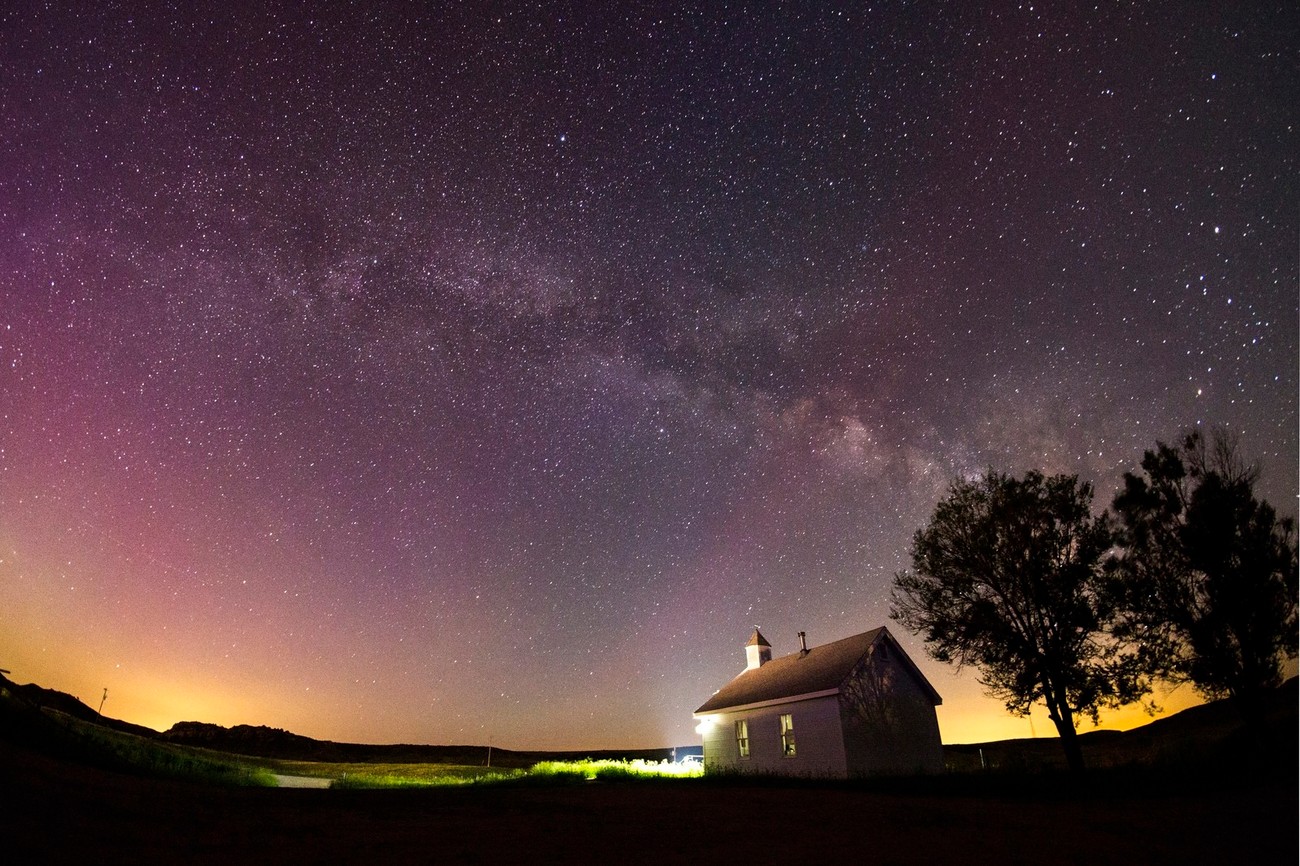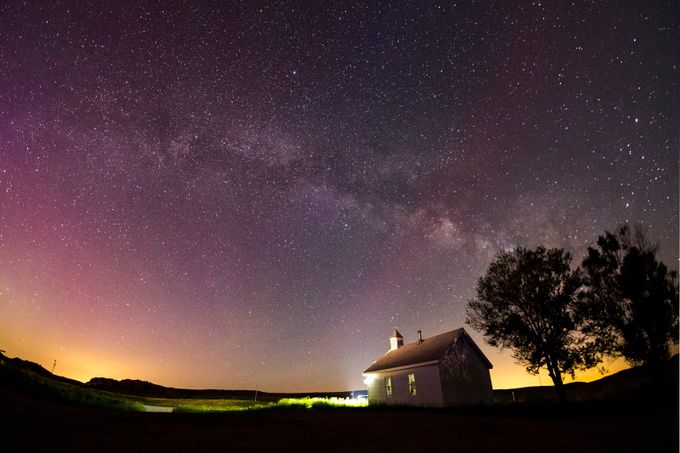ViewBug community member evanguarino shares the story behind his photo "Small church Big Universe". "I snapped this one off of Highway 287 near the Colorado-Wyoming state border, during one of my numerous trips across the northern United States for my job."
What time of day?
This was taken around 12:30am - I had to wait for the moon to set but when I saw the church I knew it would make for a good foreground to the Milky Way, which would definitely be visible with no light pollution from any nearby cities.
Anything worth sharing about lighting?
The purple-pink bands of light might be a faint hint of the aurora borealis that I just couldn't make out with the naked eye. Cameras typically do a better job of "seeing" in the dark than our eyes, so the colorful streaks were a welcomed surprise in this shot.
What equipment did you use?
I used a mirrorless camera, the Canon EOS-M, and an 8mm f/2.8 fisheye for most of my milky way shots. It's the best choice in my collection thanks to its speed and extremely wide angle, which allows for longer exposure times before stars begin to streak. I also used a sturdy little Manfrotto tripod that I bought specifically to fit into my luggage when I travel, because I don't want to miss out on moments like these!.
What inspired you to take this photo?
Whenever I travel to remote parts of the US as part of my job inspecting roads and bridges, I look for dark sky. It's such a rarity along the East Coast, especially in cities like Boston (where I call home). I'm fascinated by the Milky Way and the sheer number of stars in the sky when you get far enough away from the light pollution of cities and towns. It's something that I believe you have to experience in order to fully appreciate - when you can see the arch and the bulge of the Milky Way's center just by looking up into the sky, it gives you a real sense of scale within your own life.
Did you do any post-processing? If yes, tell us about it!
Because I use a fisheye lens, the images I capture tend to be distorted in the foreground. In this case, it was fairly noticeable along the horizon line, so I used Adobe Photoshop to level it out a bit more, without distorting the church building in a really noticeable or distracting way. It was a bit of a balancing act, but I settled on a final product that looks natural while capturing much more of the Milky Way than I ever could have using any of my other wide angle lenses.
What equipment do you normally have in your bag?
I have a pretty typical setup for landscape photography, but somewhat tailored to travel. My mirrorless camera is light and compact, and the Canon EF-M mount lenses have a similar design. I have the aforementioned 8mm f/2.8 fisheye (by Samyang), as well as a Canon 22mm f/2 and 18-55 f/3.5. I have recently added a tilt-shift lens, but its much large than my camera and also pretty expensive, so I don't tend to carry it around with me on a regular basis. Aside from the essentials, I usually have a couple spare batteries and memory cards, a set of neutral density filters (including graduated filters - what a useful tool!) and a tripod.
Any advice for others trying to capture something similar?
My advice would be to begin by mastering the Milky Way, and then figure out how to work that into a really compelling photo. Capturing the Milky Way can be tricky, but also very rewarding if you do it right. Getting the right composition around the Milky Way adds a new level of complexity. A lot of the work is done before you every touch the shutter - you've got to find a scene, make sure its dark enough (based on surroundings as well as the moon), and make sure you can get the Milky Way into the frame - it doesn't always cooperate with the image you've envisioned and planned for. Pateince and preparedness are the keys to mastering night sky shots.



